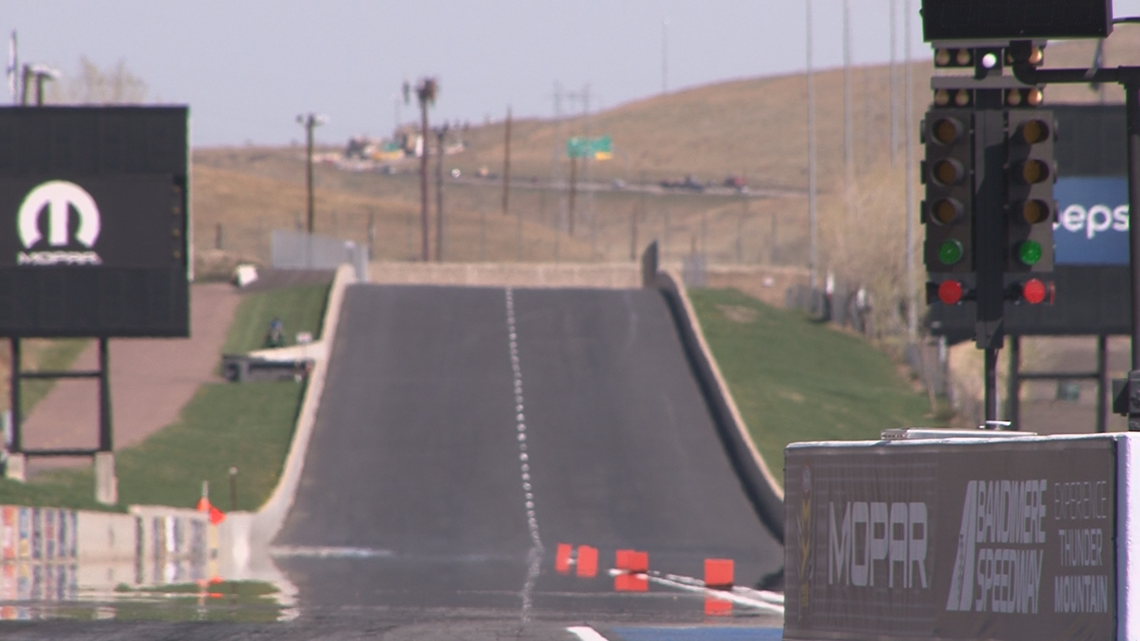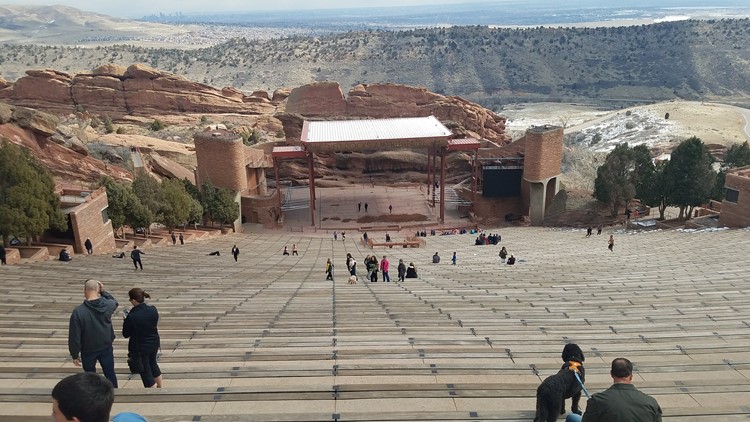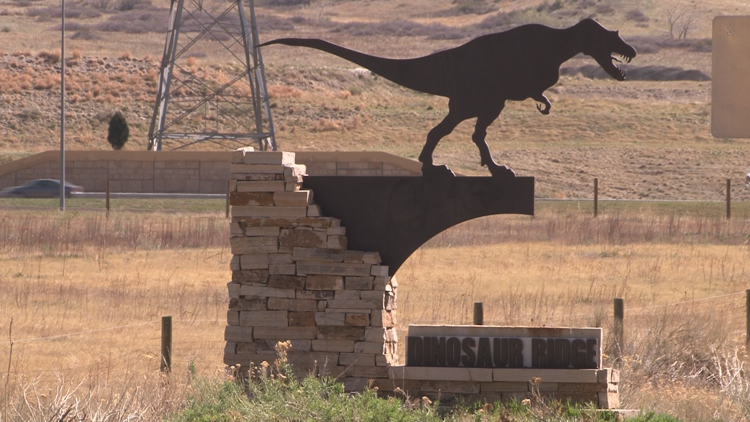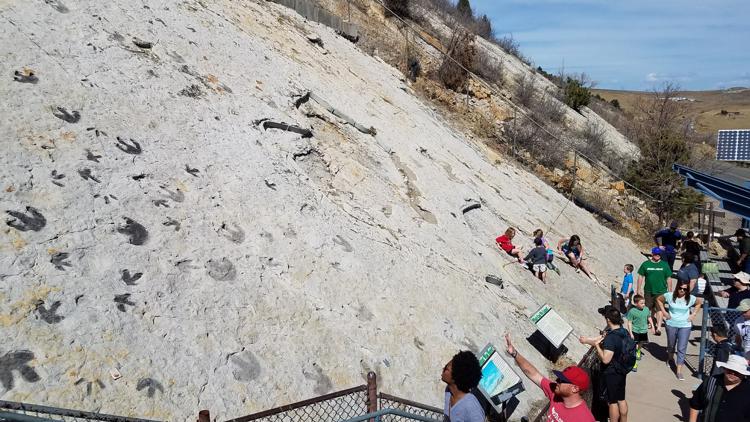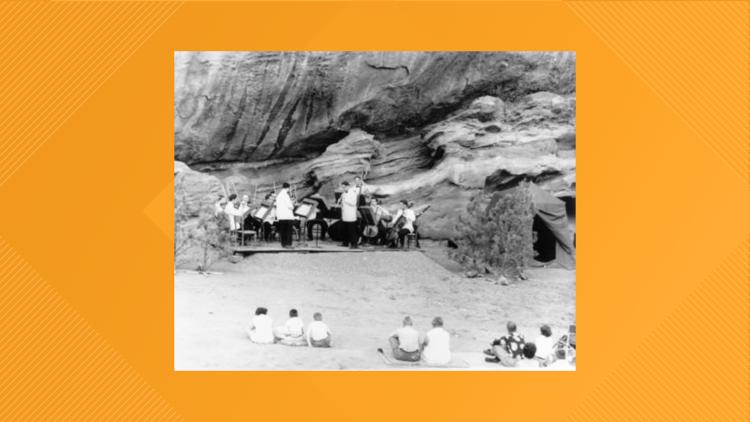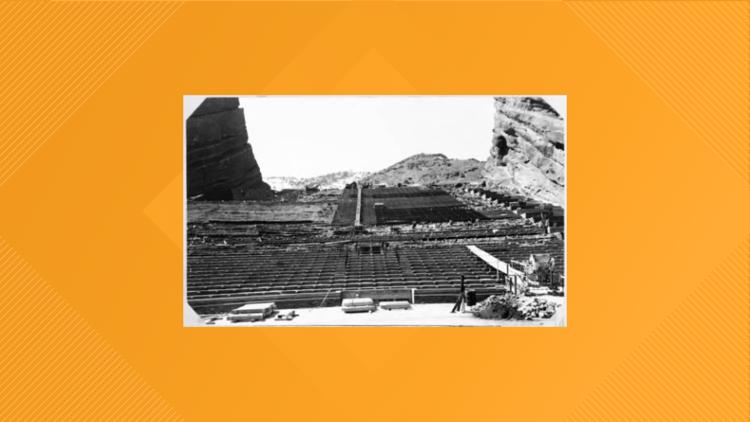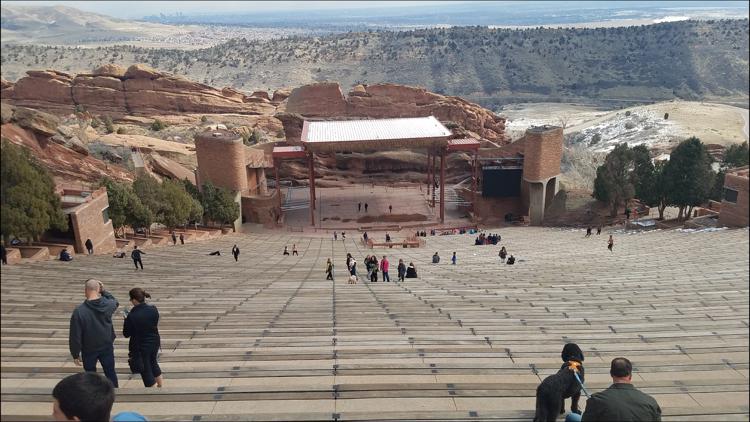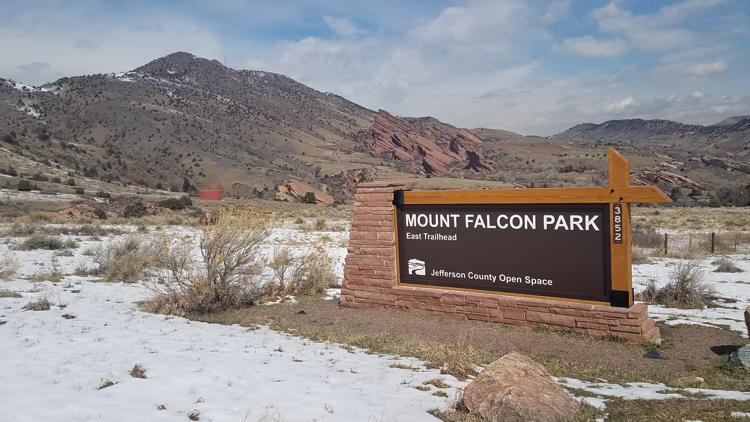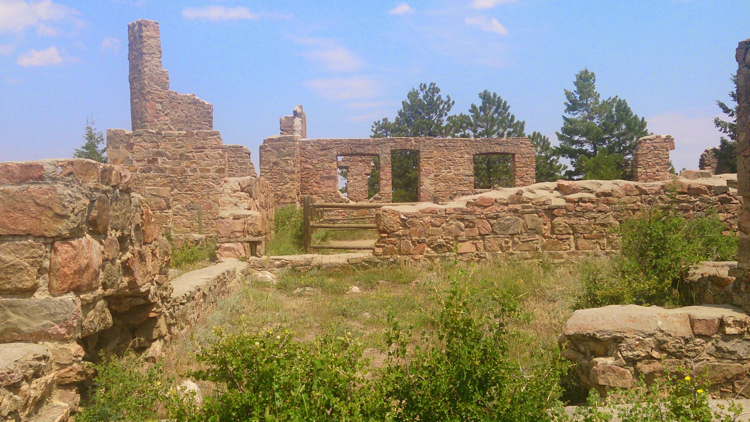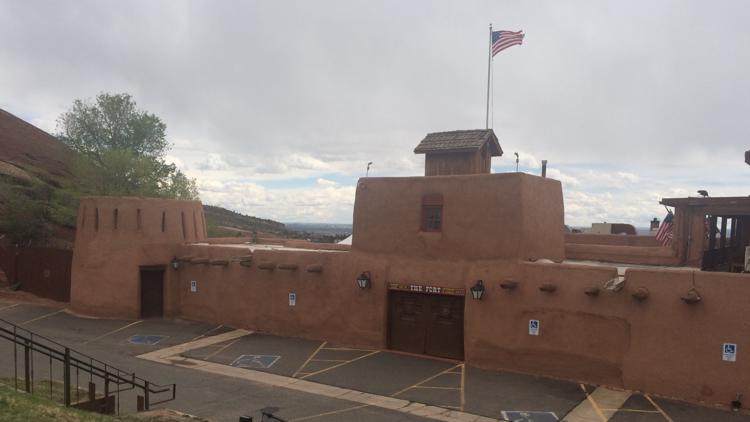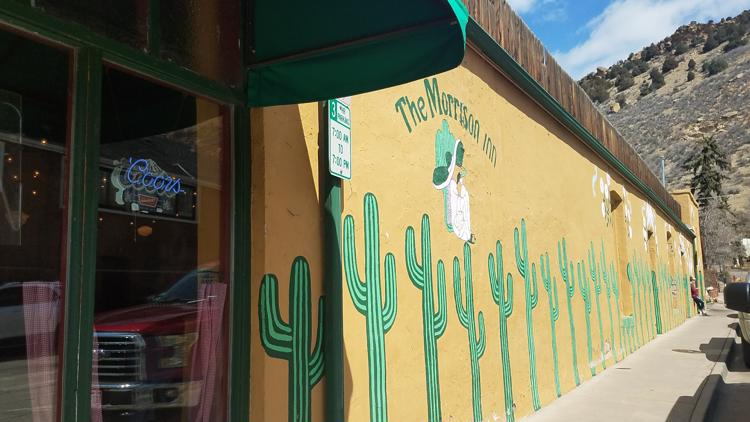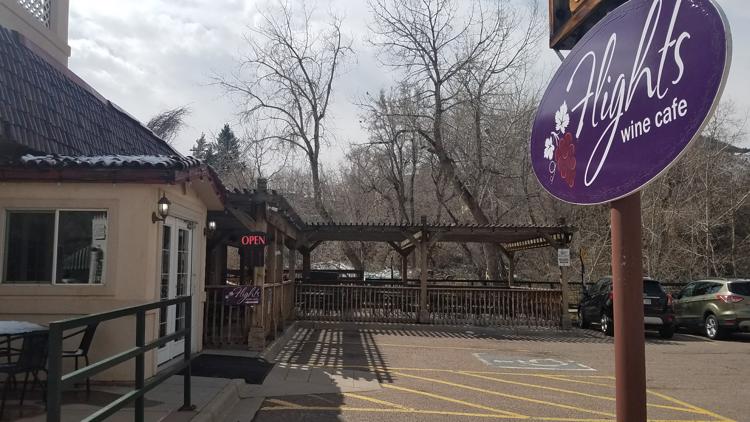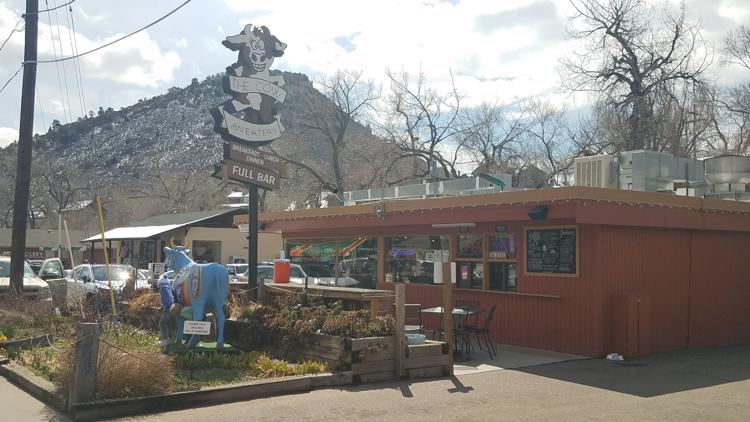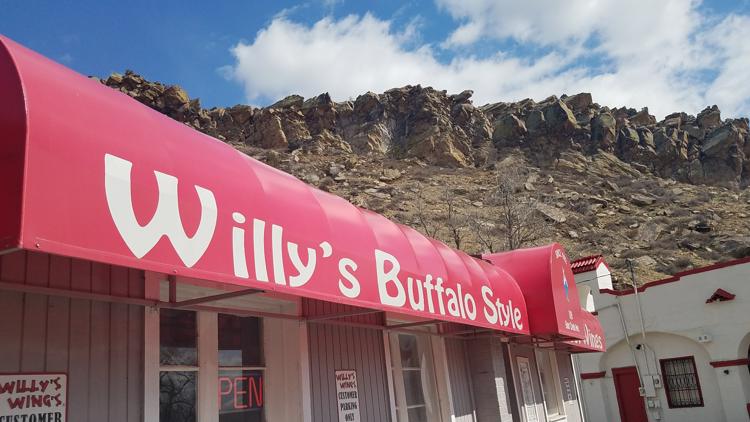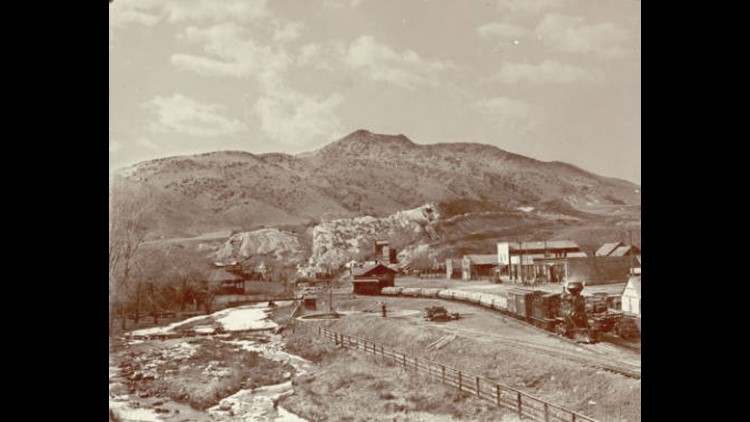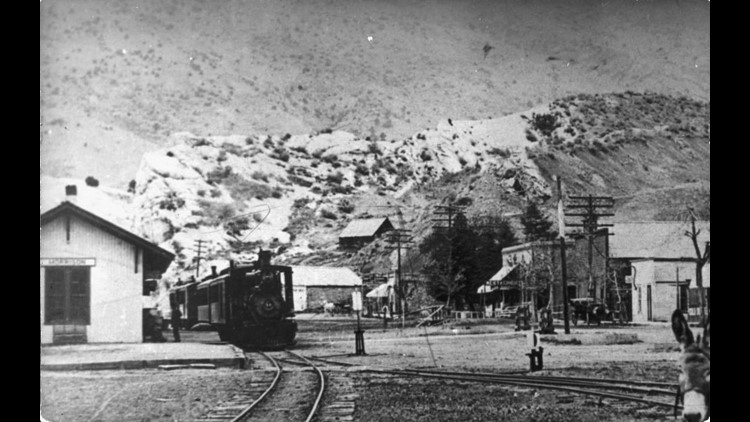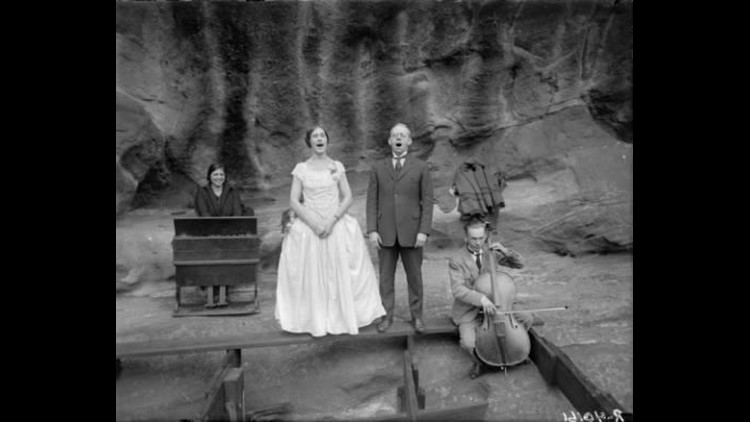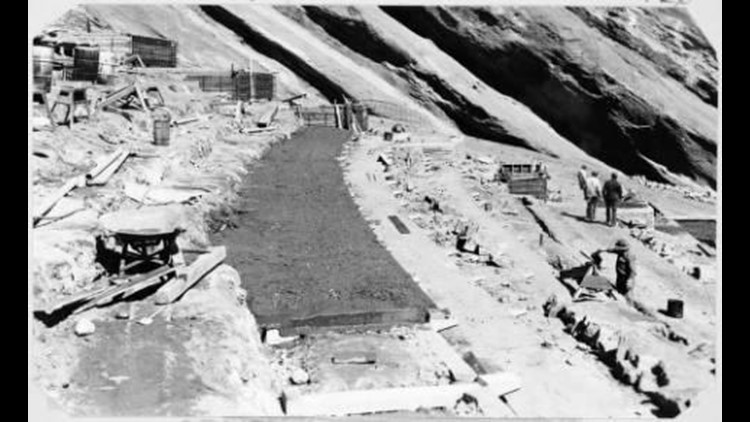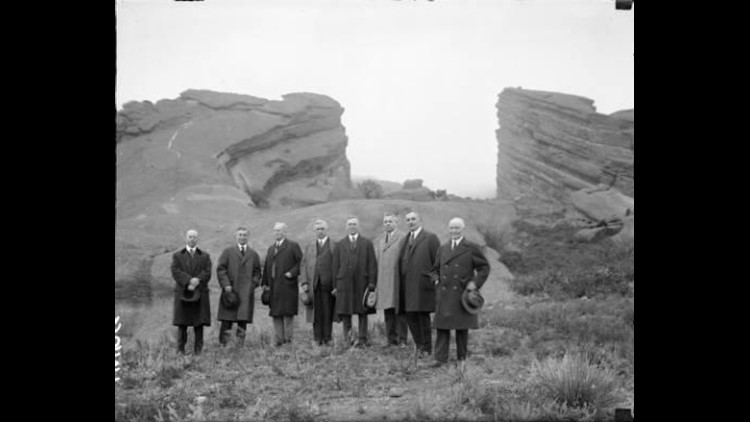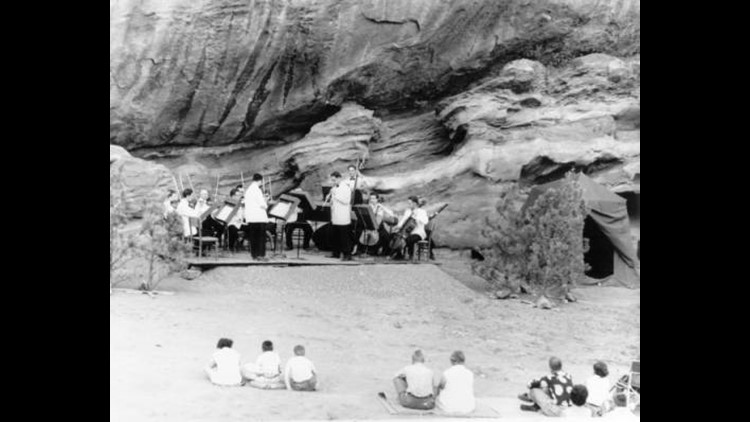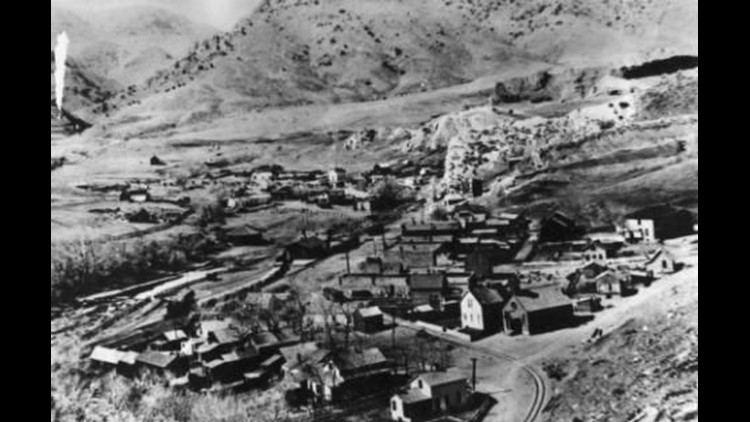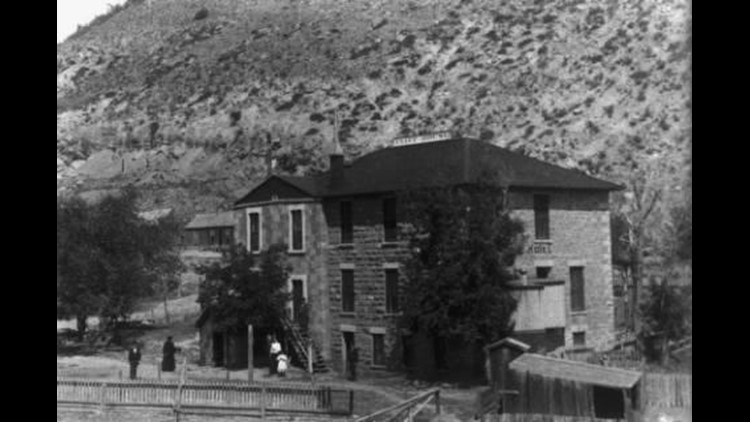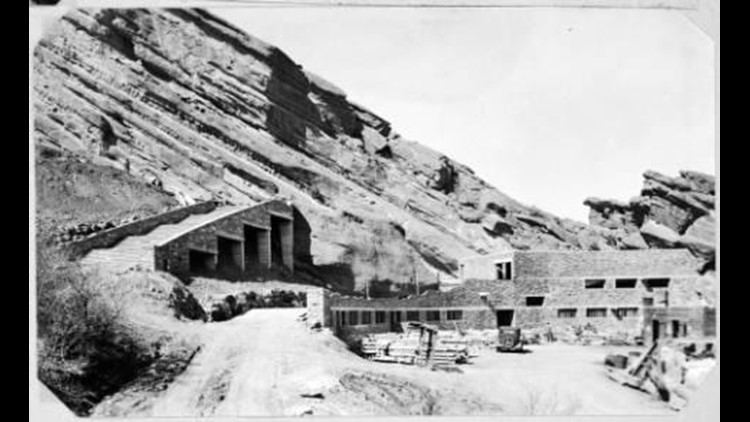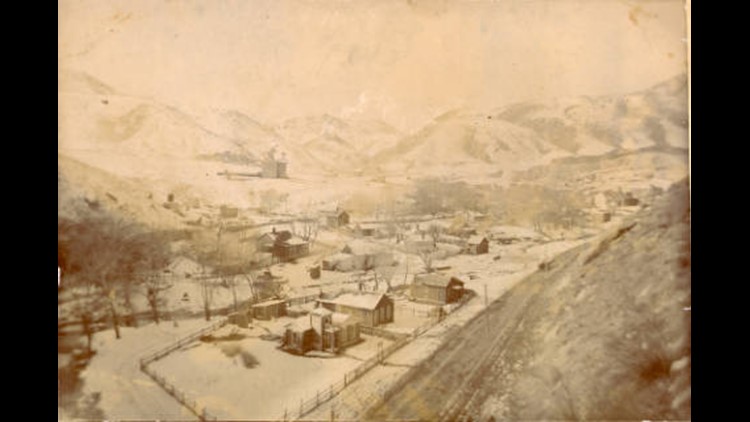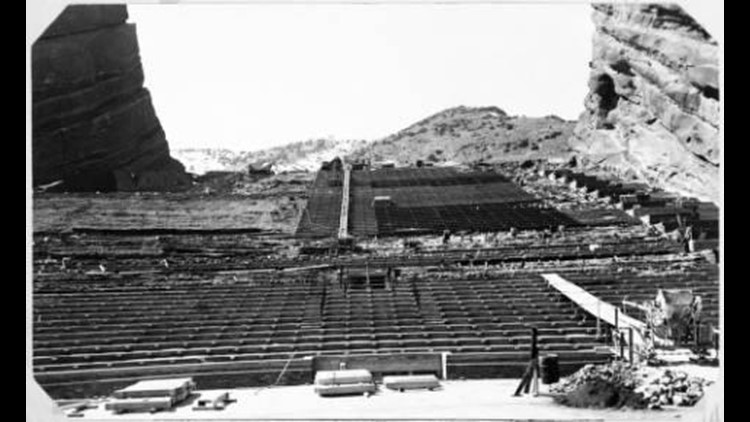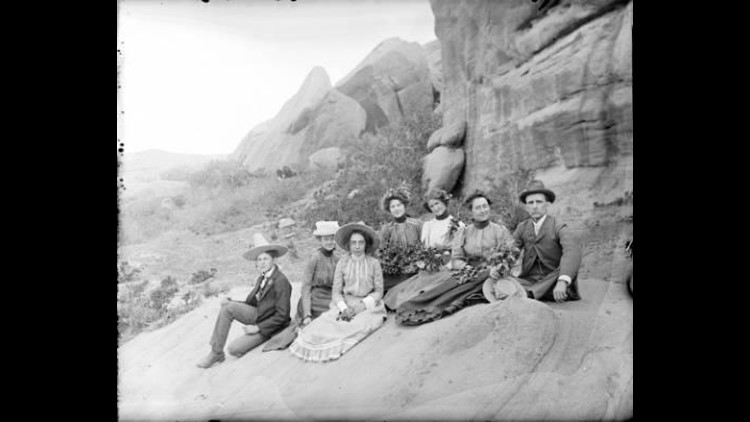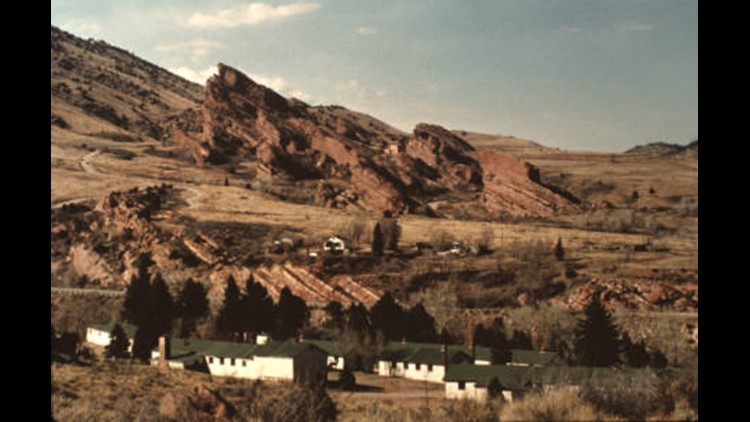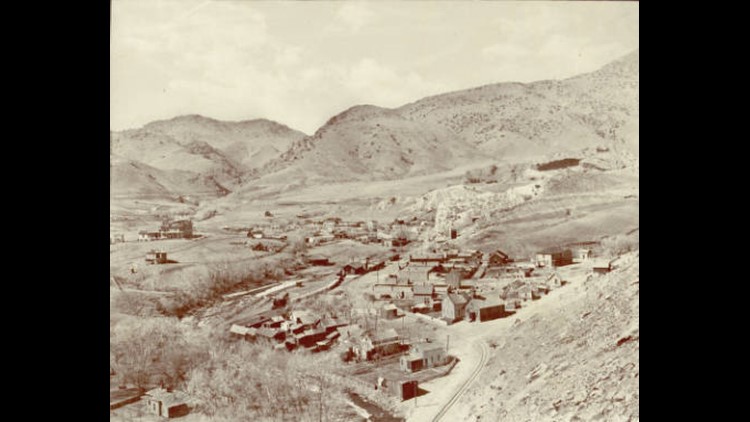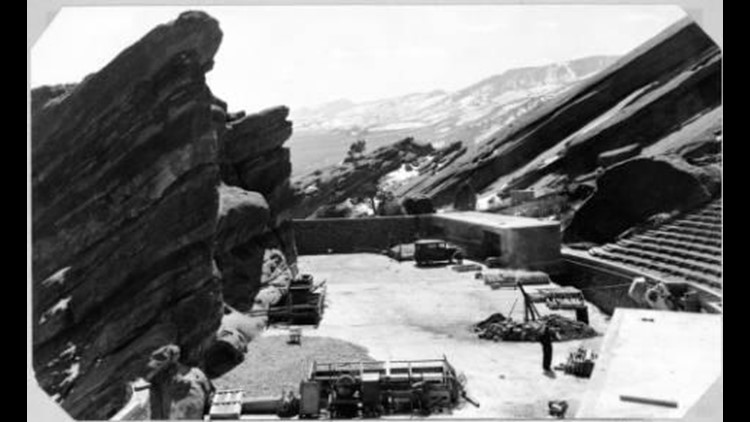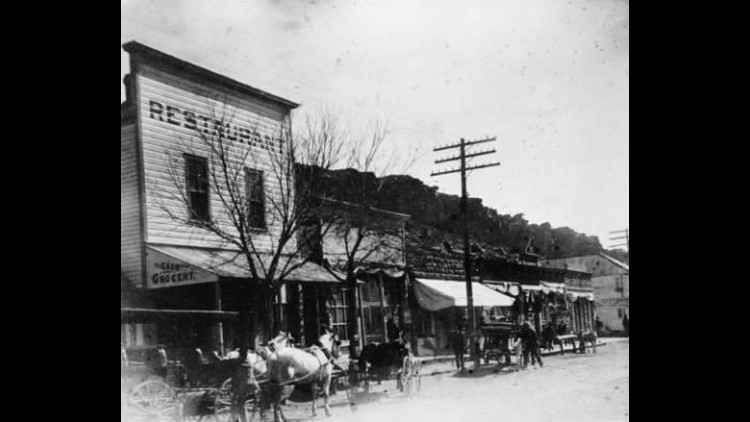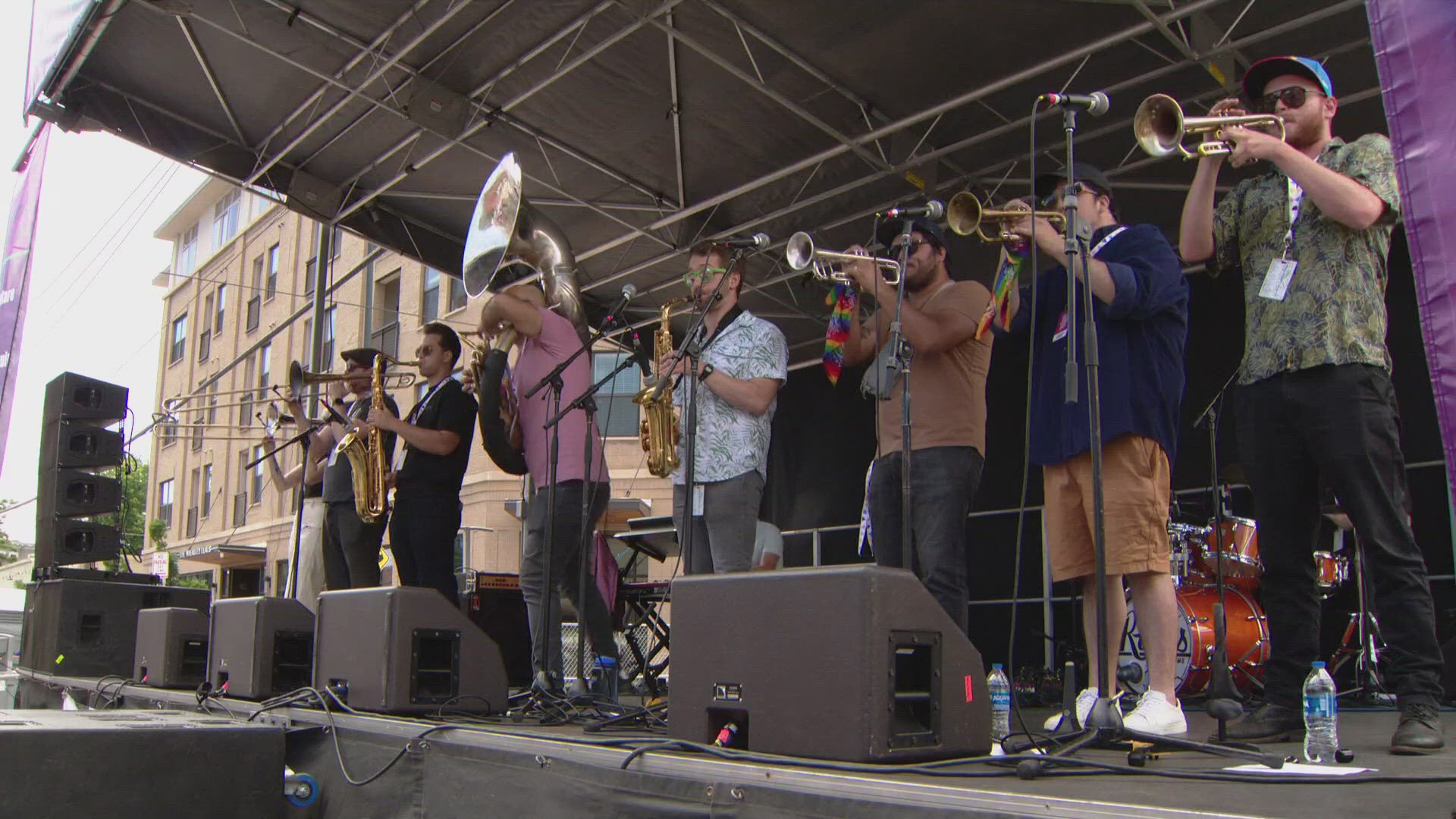morrison — Tucked into the foothills just west of Lakewood and about 15 miles from Denver is the town of Morrison, home to about 500 people and the gateway to many popular mountain attractions.
It's most famous is the stunning Red Rocks Amphitheatre, which will open its season this weekend at the venue's 71st Easter Sunrise Service. The nondenominational service begins at 6:00 am (music starts at 5:30 am) and will feature Rev. Tawana Davis and music from Soo-Jin Kim, Eric McEuen and the Jubilate! Sacred Singers.
The rest of the summer's schedule is filled with a wide-range concerts, as well as some popular fitness events (although it's always free to work-out on the steps before concert set-up begins).
Downtown, there's a stretch of about 40 unique local business and restaurants.
Join our photo tours each Friday on Instagram!
Photo tour of Morrison
Homes prices in Morrison, like the rest of metro Denver, have risen in the last year. The median price for all-size properties is about $407,500, according to real estate website Trulia.com.
Where the dinosaurs roamed
The history of Morrison begins with the discovery of dinosaurs.


In March of 1877, Arthur Lakes, a professor and geologist, discovered massive dinosaur bones along the Dakota hogback in Morrison. Lakes hoped an expert would be interested in his find and would hire him to continue searching the area.
He first wrote to Othniel Marsh, one of the most prominent dinosaur specialists of the time, about his discovery. Marsh only vaguely responded and then stopped corresponded altogether, so Lakes sent a sample of one of the bones to Marsh’s rival, Edward Cope. As soon as Marsh got word Cope might be interested, he hired Lakes.
For the next two years, Lakes and his colleagues would continue excavating the hogback under Marsh’s direction. It would be one of the most prominent sites of the “Bone Wars” between Marsh and Cope during the late 19th century.
These quarries also yielded the world’s first fossils of the Stegosaurus and Apatosaurus (better known as the Brontosaurus).
After Lakes finished his work, the fossil beds were deserted and the site was lost for 123 years. However, Lakes had documented his discoveries in detailed field notes, paintings and sketches. In 2002, researchers were able to use them to rediscover those original quarries and begin digging again.
The site is now home to Dinosaur Ridge, a National Natural Landmark, that includes a visitors center and two trails where visitors can see geologic sites, dinosaur bones, trace fossils and a pristine site of dinosaur tracks.


You can walk the trails for free, or take a shuttle or guided tour for a small fee.
The history of the town
Morrison itself was named after George Morrison, a stonemason who founded the town.
Morrison had first helped found the town of Mt. Vernon before moving south to open the Morrison Stone, Lime and Town, Co. in 1874. He also helped bring the railroad through the area.
A look at Morrison, Red Rocks Park through history
The railroad helped to bring stone from Morrison’s quarries down into Denver and tourists into the slowly-growing community. Over time, it became a supply center for towns popping up along the canyons and in the mountains to the west as well as to the ranches to its east.
The Town of Morrison was officially incorporated in 1906, and Pete Morrison, grandson of the town’s original founder, became its first mayor.
Red Rocks
Since the early 1900s, artists have used the majestic scenery and natural acoustics at Red Rocks for music.

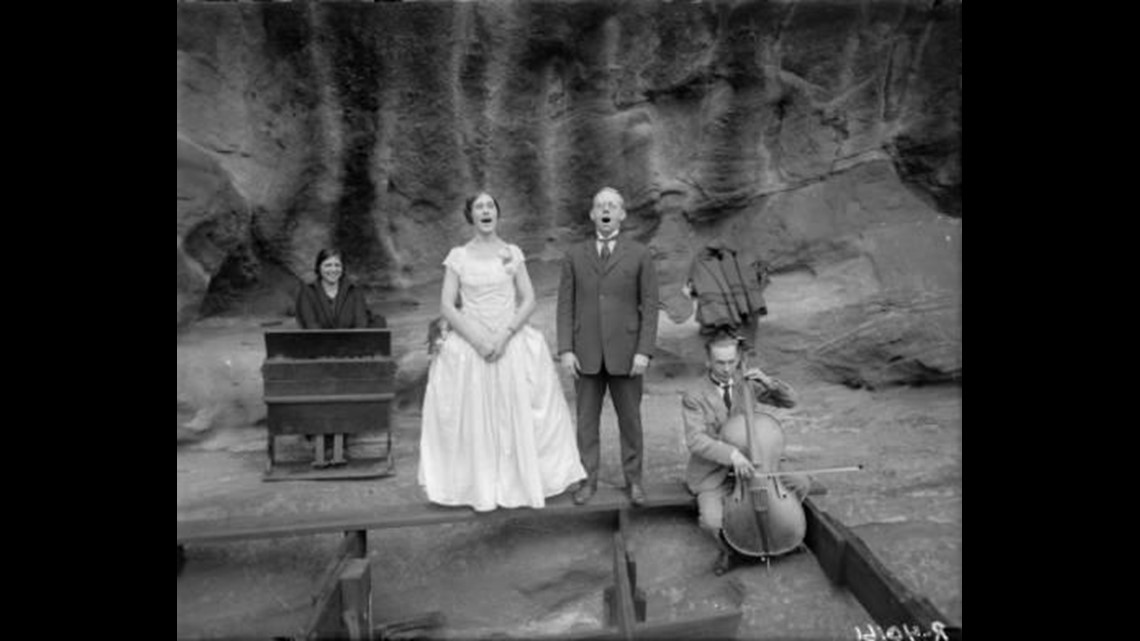
The famous red rocks that house the venue are actually part of a mountain range that predates the Rocky Mountains by hundreds of millions of years. Over time, water eroded the peaks and the sediment that was deposited reformed into dense, hard rock. The Flatirons in Boulder, Garden of the Gods in Colorado Springs and Red Rocks amphitheater are all part of the remnants of this ancient range.
Entrepreneur and publisher John Brisben Walker first had the idea of bringing artists onto a temporary stage nestled in the rocks, at that time known as the Garden of Angels. He would produce concerts between 1906 and 1910.
The City of Denver purchased the park from Walker in 1928. Over 12 years, Red Rocks Amphitheatre was built as part of a program by the Civilian Conservation Corps, a relief effort that was part of the New Deal.

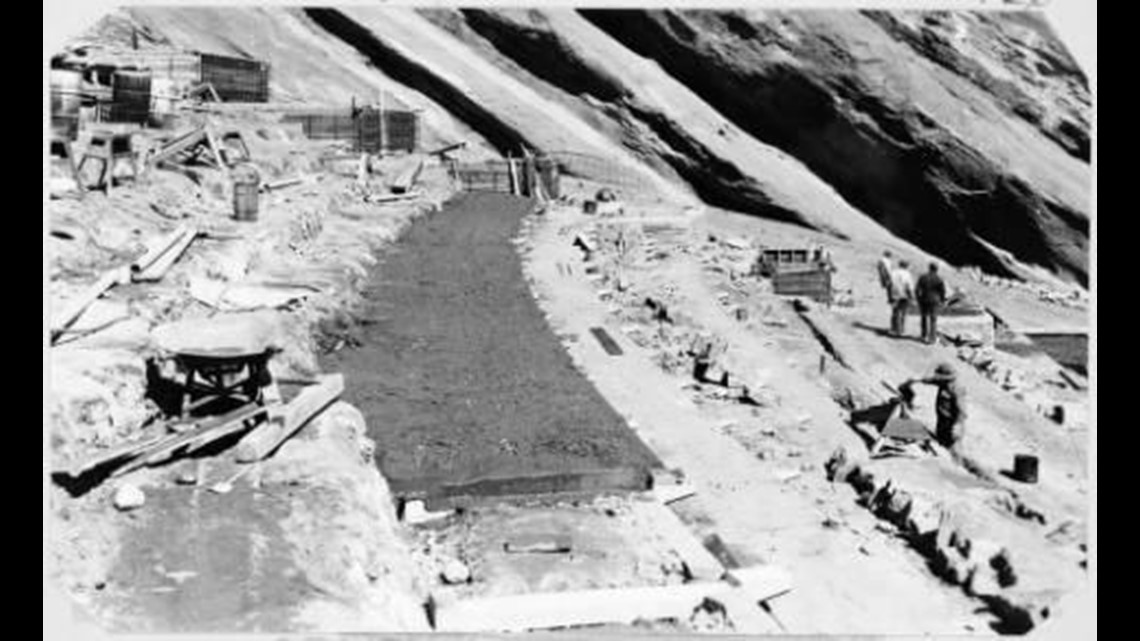
The amphitheater was dedicated on June 15, 1941 and it held its very first event on April 6, 1947: the Easter Sunrise Service. Every year since then, the Easter Sunrise Service marks the beginning of the official Red Rocks season.
In its early days, Red Rocks hosted mainly opera and symphonic shows. One of the first notable popular music performances was by Nat King Cole in August 1956. By the early 1960s, many popular acts were beginning to play the venue, including The Beatles, Joan Baez and Peter, Paul and Mary.
Today, besides being surrounded by the stunning, natural rock formations seen throughout the 738-acre Red Rocks Park, the amphitheater is considered acoustically perfect and affords striking views of Denver and the mountains around it. The Colorado Music Hall of Fame in 2011 inducted Red Rocks as one of its first two honorees.
Red Rocks Park received National Historic Landmark status in 2015 and remains one of the most popular music venues in the country, both for performers and spectators. Thrillist also named the amphitheater among the 15 most beautiful music venues in the world.

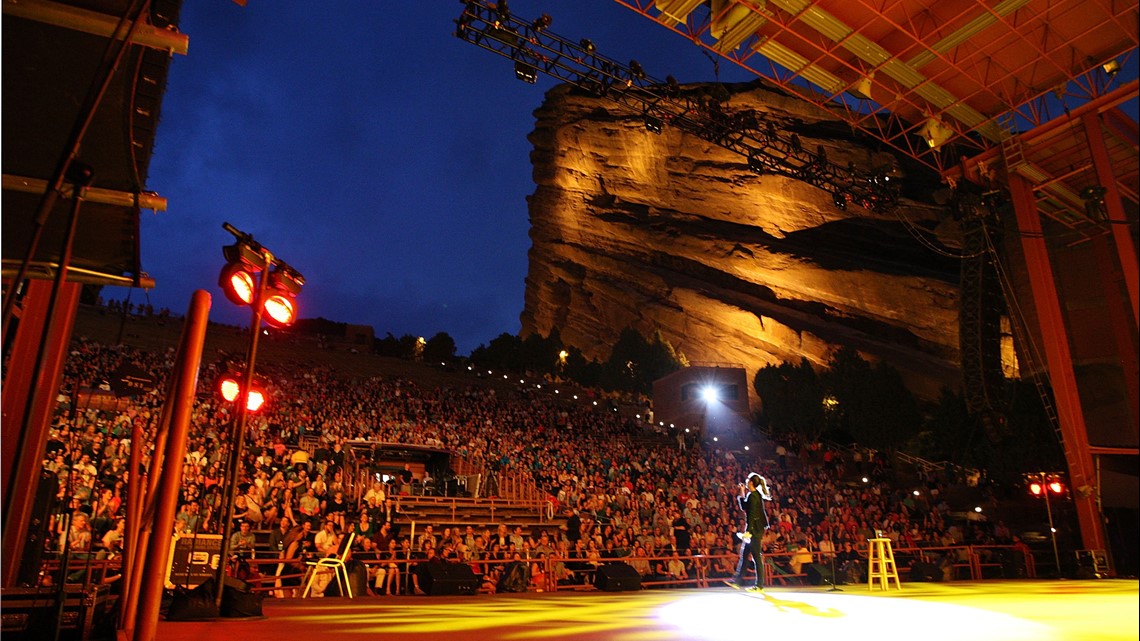
Surrounding the amphitheater are miles of hiking and mountain biking trails (including the Trading Post Trail and the Geologic Overlook Trail). From there, the park's trails connect to surrounding trail systems, including Jefferson County's Matthews-Winters Park and the Dakota Ridge Trail.
Living in and visiting Morrison
Outside the world-famous park, the small town has plenty to offer on its own, making it a popular day-destination for Denverites.
This includes a trail system that snakes around the outskirts of the town and connects to the Bear Creek trail, and about 40 businesses.
Among its many eating options is The Fort, a pioneer in putting unique spins on traditional Old West foods. Located at 19192 CO-8, The Fort is modeled after Bent's Old Fort, an 1833-49 trading post outside of what is now La Junta.
The building was originally intended just to be an intricate home, but when the cost of construction far exceeded the budget, the architect suggested putting in a business. A trip to the restaurant is a trip back to the frontier days, and the creative and tasty (albeit pricey) culinary experience is not one patrons soon forget.


Along the town's main thoroughfare, Bear Creek Avenue, visitors will also find plenty of great dining options. The Cow Eatery (316 Bear Creek Ave.) is a quaint and casual family-run joint, and right up the street (109 Bear Creek Avenue) is a great wing spot: Willy's Wings, known for its house buffalo sauce. Red Rocks Grill (415 Bear Creek Ave.) serves up American dishes with a southwest flair and is another great option, especially if you're into microbrews.
The Morrison Inn has long been known in town for their margaritas and Mexican food and Flights Wine Cafe is a popular choice for happy hour.
A caffeine craving is soon quelled with a visit to Al's of Morrison Coffee Shop (211 Bear Creek Ave.), stocked with gourmet coffee, pastries, smoothies and Italian sodas. Ozzi's (101 Break Creek Ln.) affords visitors another sweet-tooth spot, serving up ice cream, cookies, mochas and more.
Bear Creek Avenue eventually turns into the windy and visually stunning Bear Creek Road (CO-74), along which are several trailheads, such as Lair O' the Bear (an easy trail that passes right by the Dunafon Castle), Corwina, Little Park, O'Fallon Park and more.
The eastern entrance to the extremely popular Mt. Falcon Park and the Castle Trail is just outside of Morrison’s downtown.
The trails' close proximity to Denver and the western suburbs make them a popular day trip choice for families.

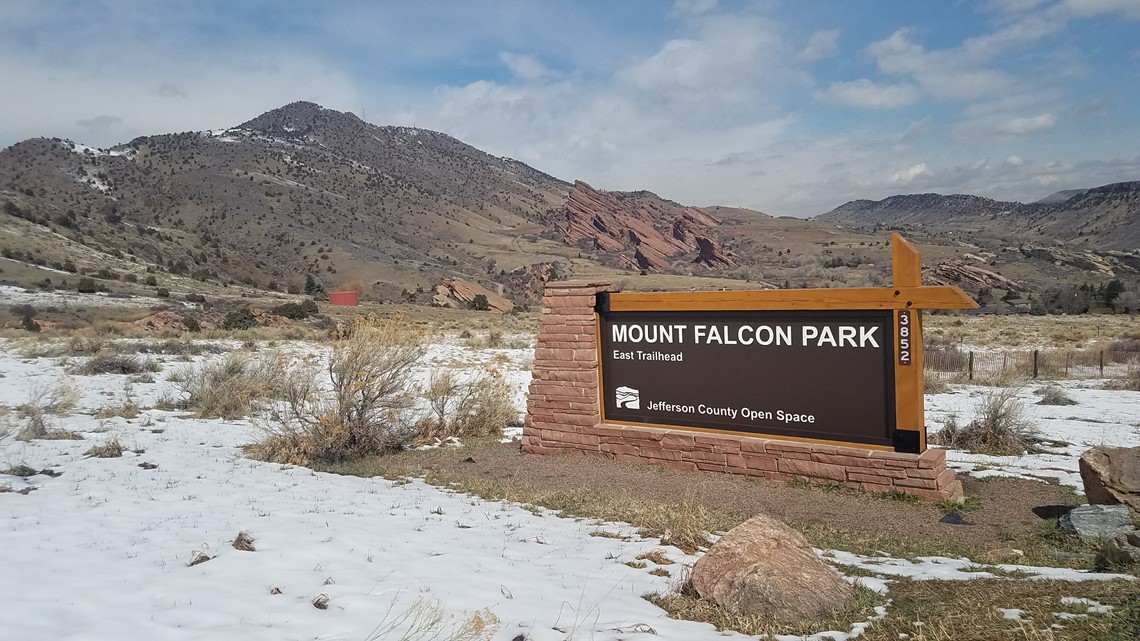
Bear Creek Road is part of the Lariat Loop, a scenic byway with twists and turns through cavernous mountains. The Lariat Loop, which runs from Morrison west to Evergreen, then north to Bergen Park and eventually back south to Lakewood, is a popular drive for motorcyclists and sports cars, as well as for pavement cyclists.
Another draw for auto enthusiasts is Bandimere Speedway, a quarter-mile drag-strip venue that hosts events year-round. There, drivers can test their car's quarter-mile speeds, race against others on designated days and participate in a number of other events.

